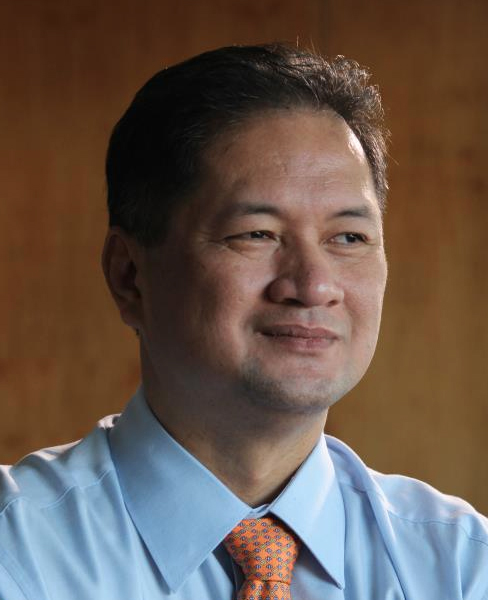SUMMARY
This is AI generated summarization, which may have errors. For context, always refer to the full article.
 A useful principle to remember in governance is the aphorism “The enemy of the good is the perfect.” President Aquino could have waited another six months, maybe a year, and perhaps issued a better executive order on mining. He could have conducted another set of consultations with stakeholders and delayed releasing Executive Order No. 79.
A useful principle to remember in governance is the aphorism “The enemy of the good is the perfect.” President Aquino could have waited another six months, maybe a year, and perhaps issued a better executive order on mining. He could have conducted another set of consultations with stakeholders and delayed releasing Executive Order No. 79.
But things cannot wait on the ground. The waiting has been far too long. It was time to act. And do so decisively in a manner that would change things on the ground.
The President does not disappoint.
Executive Order No. 79 lays down very clearly the roadmap on mining sector reforms, including guidelines on environmental protection and responsible mining. The “Mining EO,” as it has come to be known, is a good and progressive issuance for which President Aquino merits congratulations.
For us from the Ateneo School of Government which recently published a book on the future of mining in the Philippines, the Aquino mining policy, as illustrated by the EO, is not perfect, but good. In fact it is very good.
We outline below our reasons why we find the EO a definitive step in the right direction for the mineral industry, as it changes paradigms for the better:
- Section 1, providing additional areas closed to mining operations or “no-go” areas. While the Mining Act (RA 7942) already provides for some no-go areas, including those prohibited under the National Integrated Protected Areas System (NIPAS, RA 7586) – and which the EO reiterates – the Presidential issuance provides 3 new categories of areas where mineral operations are prohibited:
⁃ Prime agricultural lands, in addition to lands covered by the Comprehensive Agrarian Reform Law, including plantations and areas devoted to valuable crops, and strategic agriculture and fisheries development zones and fish refuge and sanctuaries;
⁃ Tourism development areas, such as Puerto Princesa, San Vicente-El Nido-Taytay, and Southern Palawan within the Palawan Tourism Cluster, and Camarines, Catanduanes, and Albay-Sorsogon-Masbate within the Bicol Tourism Cluster, as per the National Tourism Development Plan; and
⁃ Other critical areas, island ecosystems, and impact areas of mining. This is a very powerful argument why Mindoro, Sibuyan, Camiguin, Siquijor, Romblon and similar islands should be considered off limits to mining.
- Section 4 imposing a moratorium on the grant of mineral agreements pending legislation on rational revenue sharing for the industry. The imposition of this moratorium is based on the conclusion that the current system does not favor equitable distribution of the benefits derived from mining. The invocation of Section 1, Article XII of the 1987 Constitution in the EO’s preamble – a provision not usually invoked in the context of environmental protection and as such is revolutionary – says as much about the need to re-assess and re-align the myriad advantages of our mineral wealth.
 This provision indicates that the President means business – invoking the said constitutional provision on “a more equitable distribution of opportunities, income, and wealth; a sustained increase in the amount of goods and services produced by the nation for the benefit of the people; an expanding productivity as the key to raising the quality of life for all, especially the underprivileged; and that in the pursuit of these goals, all sectors of the economy and all regions of the country shall be given optimum opportunity to develop.”
This provision indicates that the President means business – invoking the said constitutional provision on “a more equitable distribution of opportunities, income, and wealth; a sustained increase in the amount of goods and services produced by the nation for the benefit of the people; an expanding productivity as the key to raising the quality of life for all, especially the underprivileged; and that in the pursuit of these goals, all sectors of the economy and all regions of the country shall be given optimum opportunity to develop.”
These all point to a clear intent to ensure that the Philippine mineral industry serves all citizens and not just the interests of a few, that it benefits the majority and raises the quality of life for all.
‘Revolutionary provisions’
In addition, the EO contains four other revolutionary provisions related to the management of mineral agreements and revenues derived therefrom:
- Section 5 on the establishment of mineral reservations, setting aside potential and future mining areas for strategic industries identified in the Philippine Development Plan and the National Industrialization Plan, subject to consultation with all concerned stakeholders.
- Section 6 on competitive public bidding over mining rights and tenements including government-owned and all expired tenements, for which the Mines and Geosciences Bureau shall not only prepare bid packages and guidelines but also ensure that social acceptability for the project has been secured.
- Section 8 on the development of value-adding activities and downstream industries for the mineral sector, which shall be laid out in a national program and road map to be formulated by relevant government agencies, the mining industry, and other stakeholders.
- Section 14 on “Improving Transparency in the Industry by Joining the Extractive Industries Transparency Initiative.” To improve transparency, accountability, and governance in the sector, the government shall support and commit participation in the Extractive Industries Transparency Initiative (EITI). The DENR is mandated to ensure that mechanisms are established to operationalize the EITI in the mining sector, in consultation and coordination with the mining industry and other concerned stakeholders.
These provisions provide a paradigm shift in how the country’s mineral reserves and resources are treated and exploited, which over the years seemed typified as a “come one, come all” system for investors. The Mining EO sets initial steps for exercising more stringent controls on the utilization of mineral resources, the grant of rights for their utilization, and the flow of revenues from such.
- Section 11, providing initial measures to improve the management and development of small-scale mining (SSM). Strict attention to the extremely problematic and complex issue of managing small-scale mining in the country is long overdue. This provision once and for all clarifies the statutes that govern the industry, reiterates that SSM must be undertaken only within the confines of delineated Minahang Bayan, and addresses the need for training and capacity building of SSM operators, among others.
Likewise, we praise the President for issuing specific directives to his Cabinet to immediately implement the EO. We particularly laud the directive to the DENR to “Desist from processing mining applications in Palawan and enhance the strict implementation and periodic review of the Strategic Environmental Plan for Palawan with the Palawan Council for Sustainable Development.”
Directives to complete cultural mapping of indigenous peoples’ areas and address their concerns and recognition of their rights, and to address the overlapping tasks and functions of departments involved in mining, are also crucial points for implementation and respond to some of the most basic systemic weaknesses of governing the mineral industry.
Some concerns
While we congratulate the President on an EO that departs from “business as usual” practices in the mineral industry, we also express concern over Section 12 on the “consistency” of local ordinances with the Constitution and national laws.
Admittedly, it is an improvement from an earlier iteration of the EO which referred to the “primacy” of national over local legislation. However, a more appropriate term would have been “harmonization” between the 2, because such assumes that local government units (LGUs) act in good faith and generally exercise their power in accordance with national laws.
Still, in spite of its language, Section 12 can be interpreted as allowing LGUs to impose restrictions on mineral activities within their jurisdiction – including mining bans – if they are able to demonstrate that such legislation is reasonable within the environmental, social, and economic circumstances surrounding a proposed project, and as long as this is supported by risk assessments and evidence-based studies, and appropriate consideration of the precautionary principle.
With EO 79, a new mining policy has been effectively put into place by a President who clearly means business. The challenge now, as always whenever our country enacts or adopts progressive legislation and policies, is implementation.
With the directives the President issued along side his EO, he is clearly also paying attention to what happens now in the field. For that reason, we are hopeful.
Perhaps, finally, the “resource curse,” the truism that extractive industries like mining cause only poverty and conflict, will be disproven in our country, and our mineral wealth will become as it should be – a bounty and blessing for our people.
For the existing mining contracts in the Philippines, view this #WhyMining map.
How does mining affect you? Are you pro or against mining? Engage, discuss & take a stand! Visit Rappler’s #WhyMining microsite for the latest stories on issues affecting the mining sector. Join the conversation by emailing whymining@rappler.com your views on the issue.
For other views on mining, read:
| Yes to Mining | No to Mining |
More on #WhyMining:
- Shaping the future of mining
- EO: No new mining contracts
- The Mining EO: A mixed bag
- Mining E.O. not perfect, but very good
- CONVERSATIONS: What are your thoughts on the mining EO? #WhyMining
- Mining E.O. pits gov’t vs local execs
- Correcting lies and disinformation
- Stand for the environment
- How can mining work for Philippines?
- Mining is a social justice issue
- REPLAY: #WHYMINING
Add a comment
How does this make you feel?
There are no comments yet. Add your comment to start the conversation.